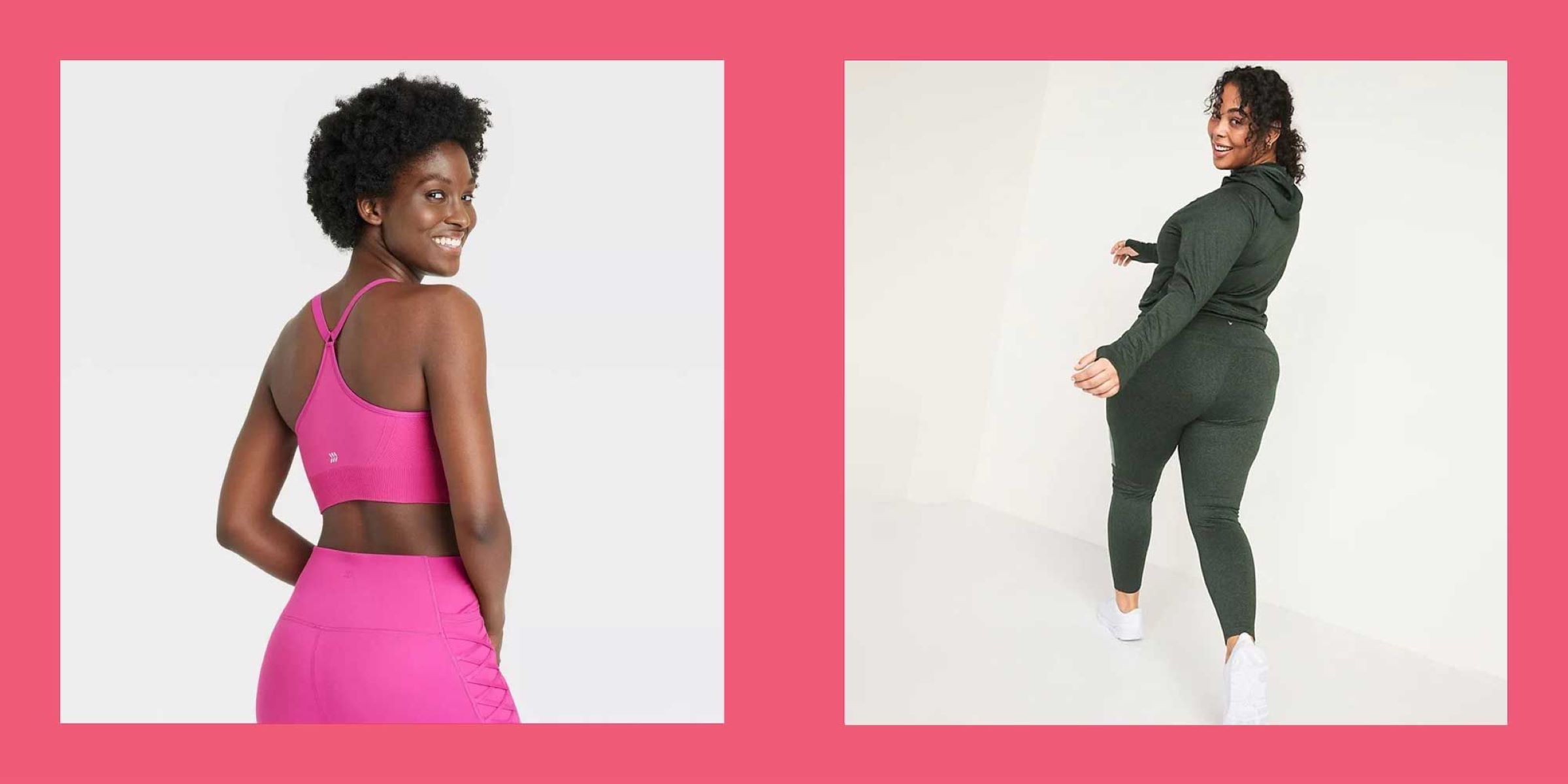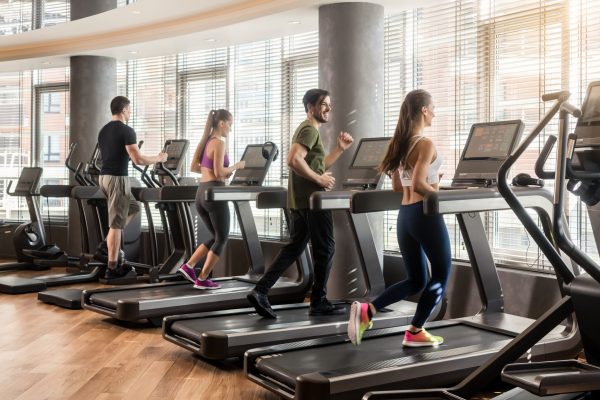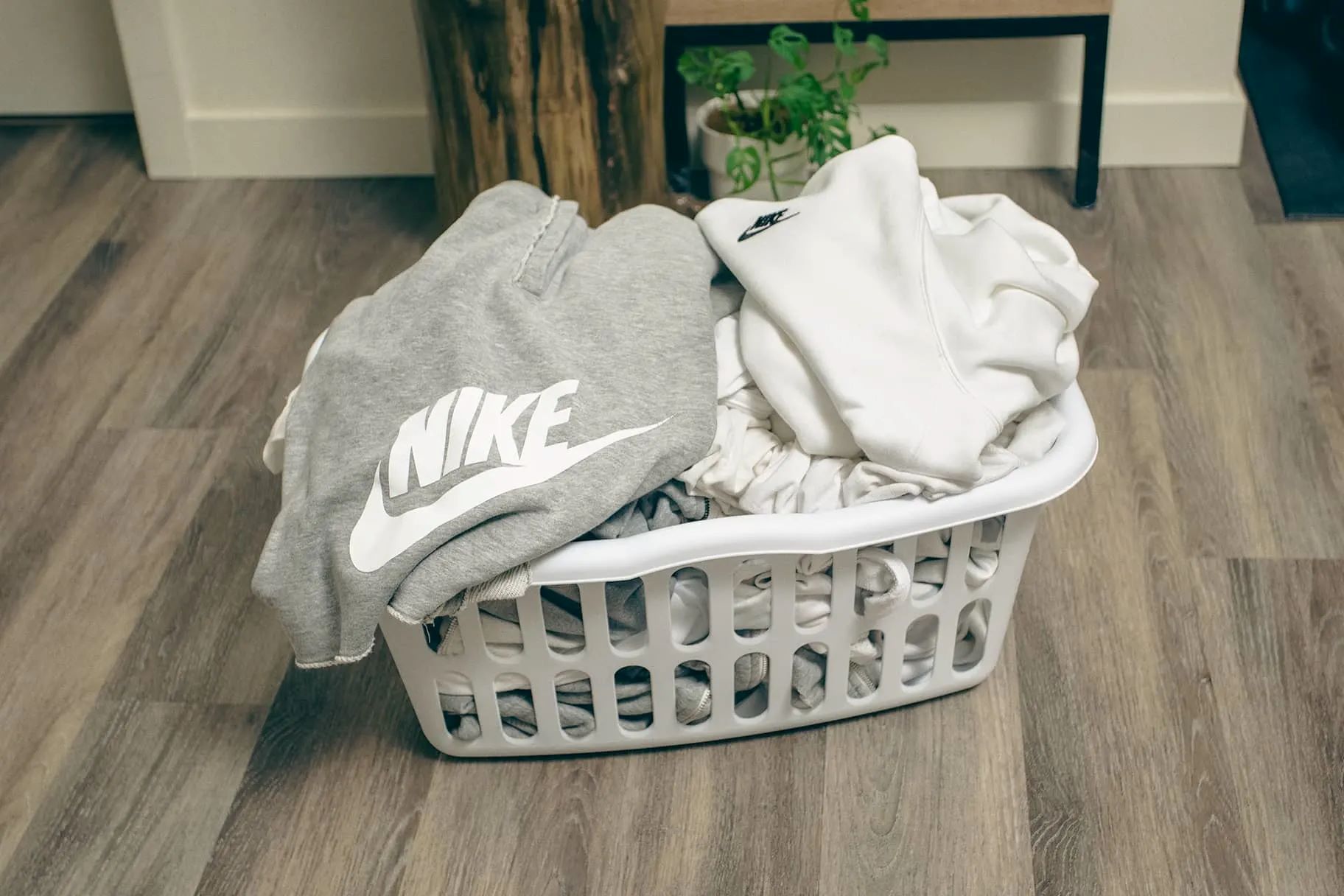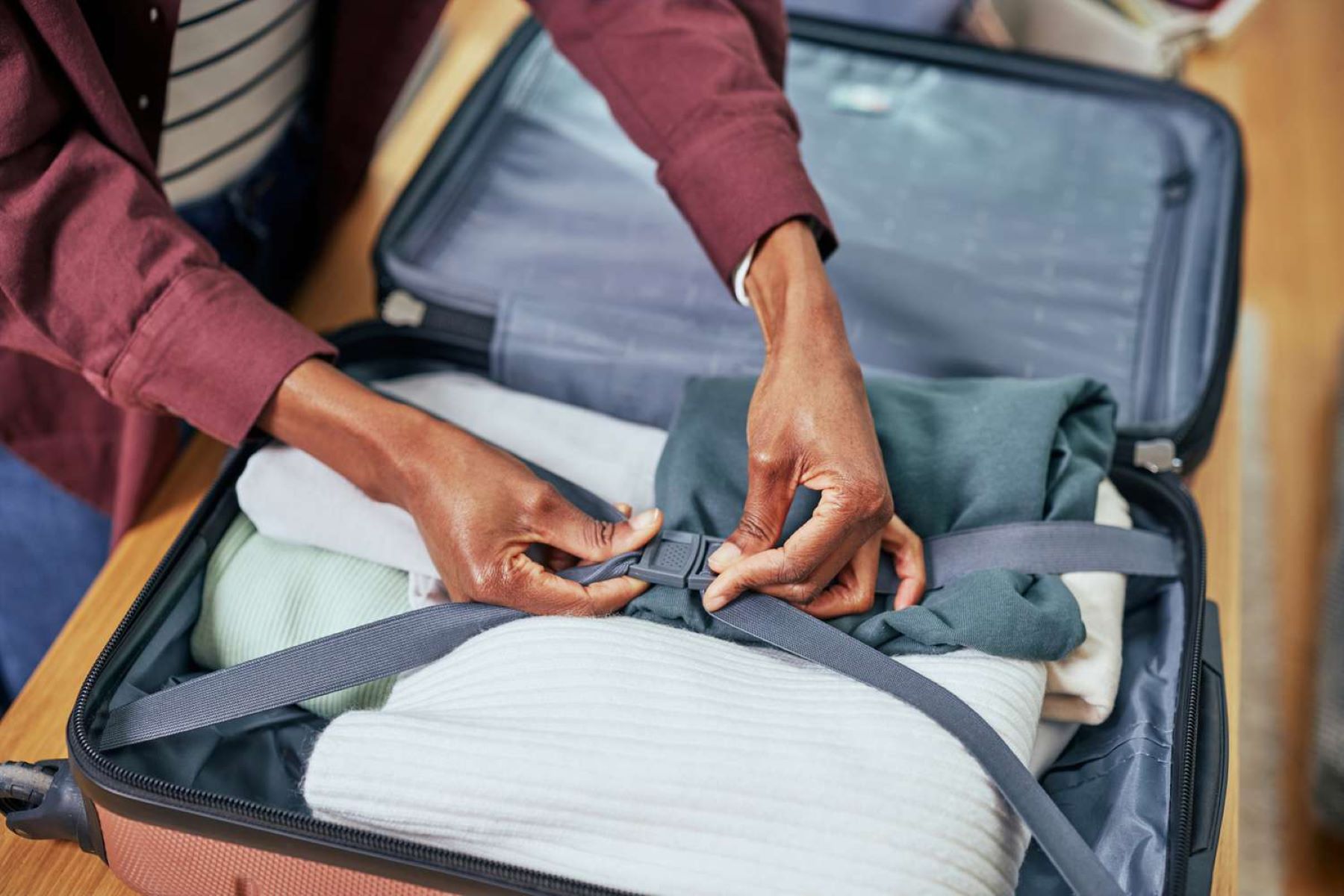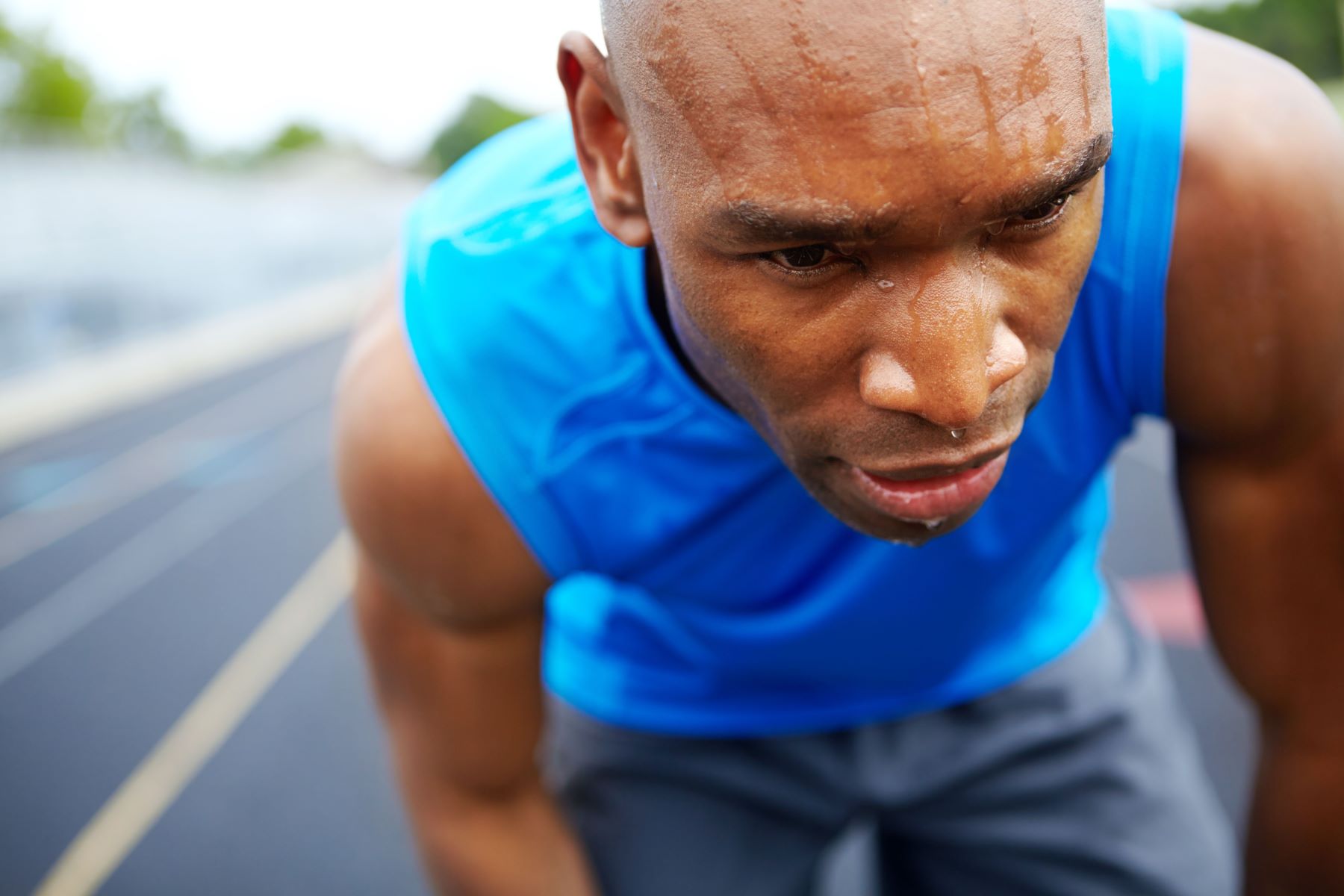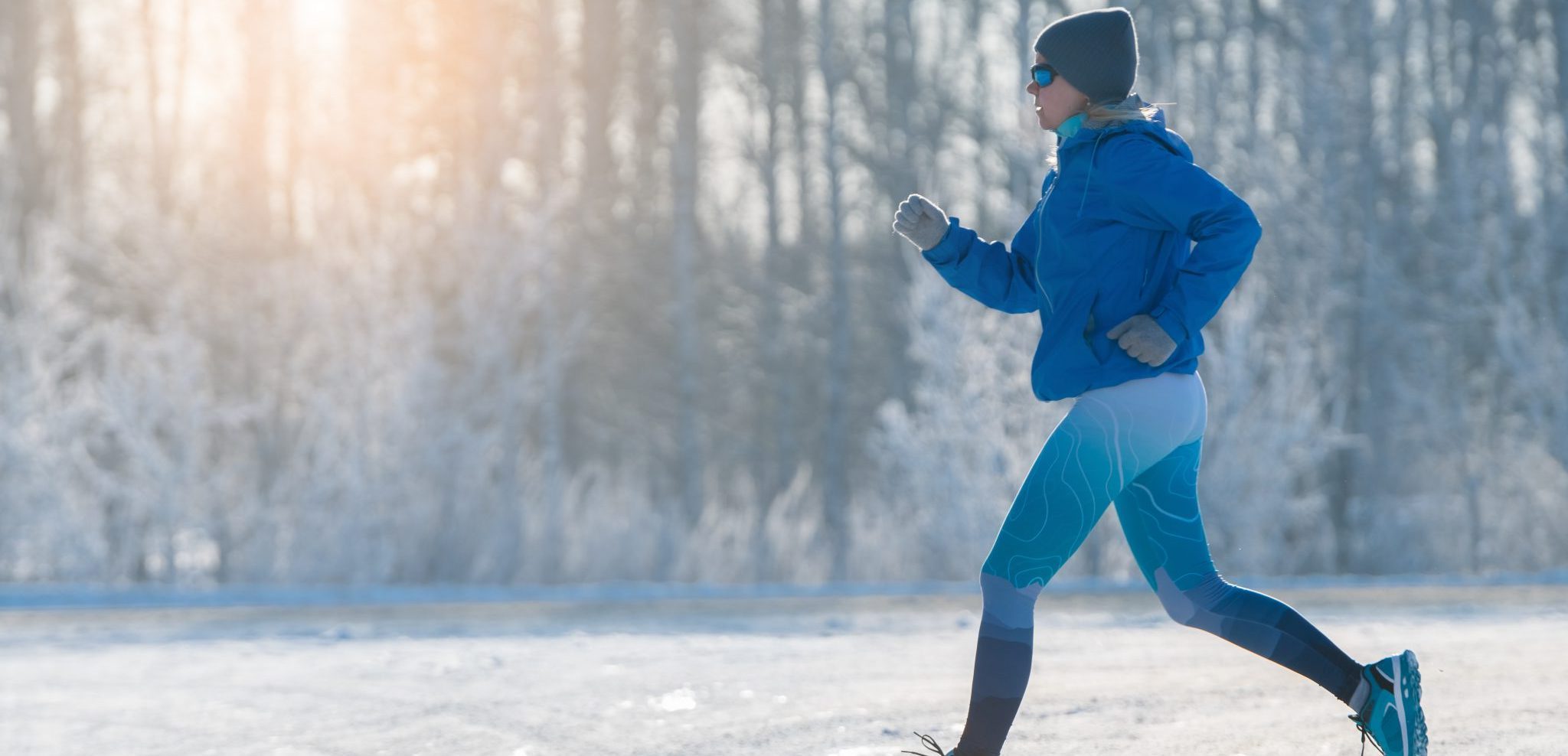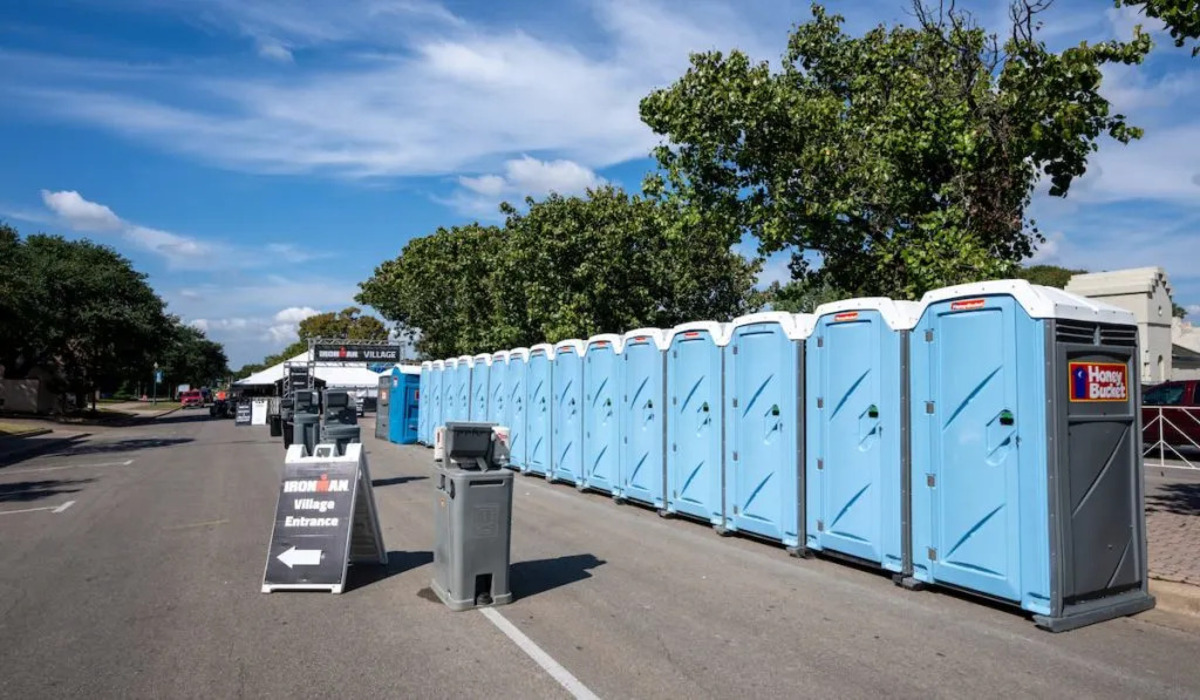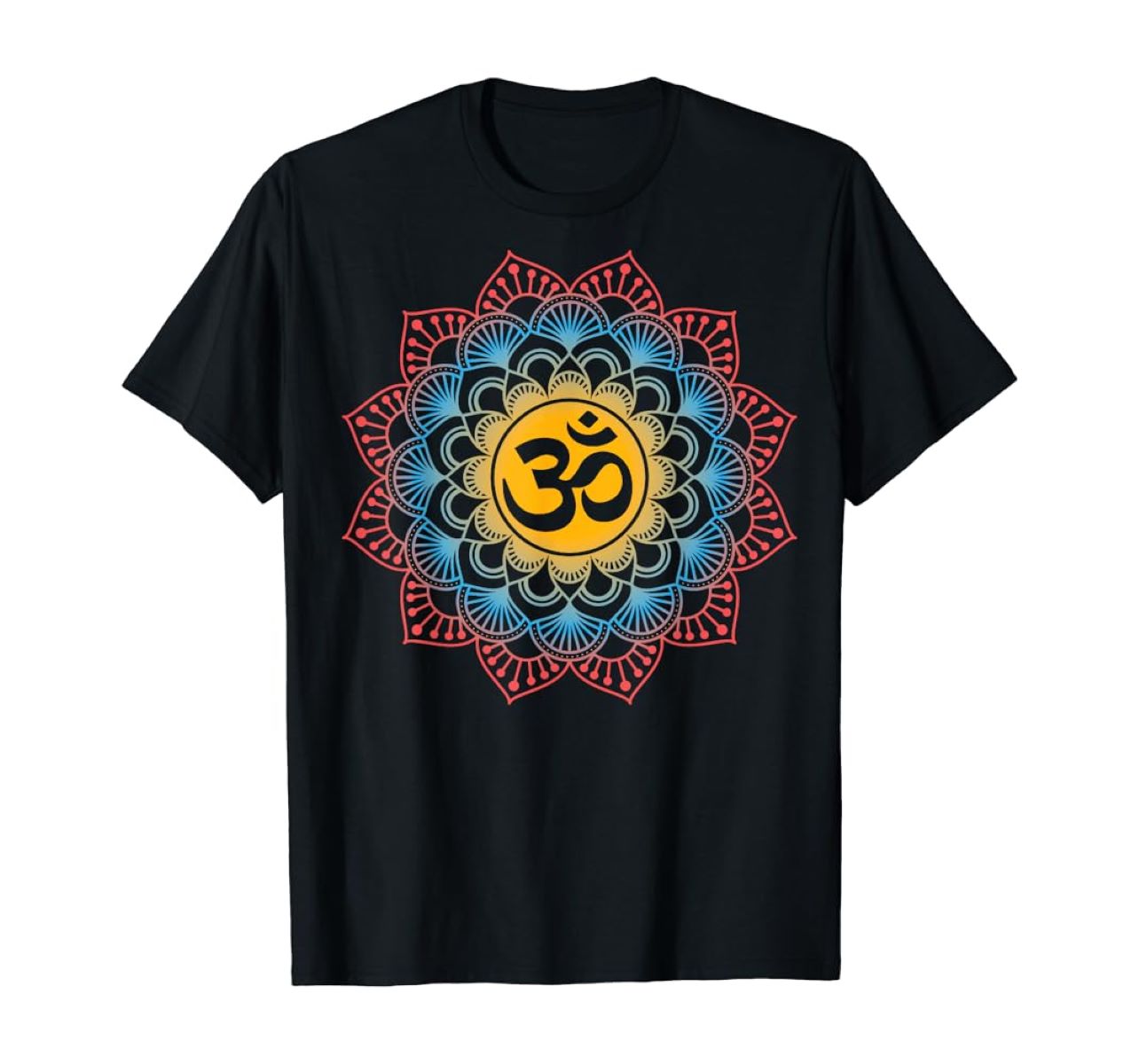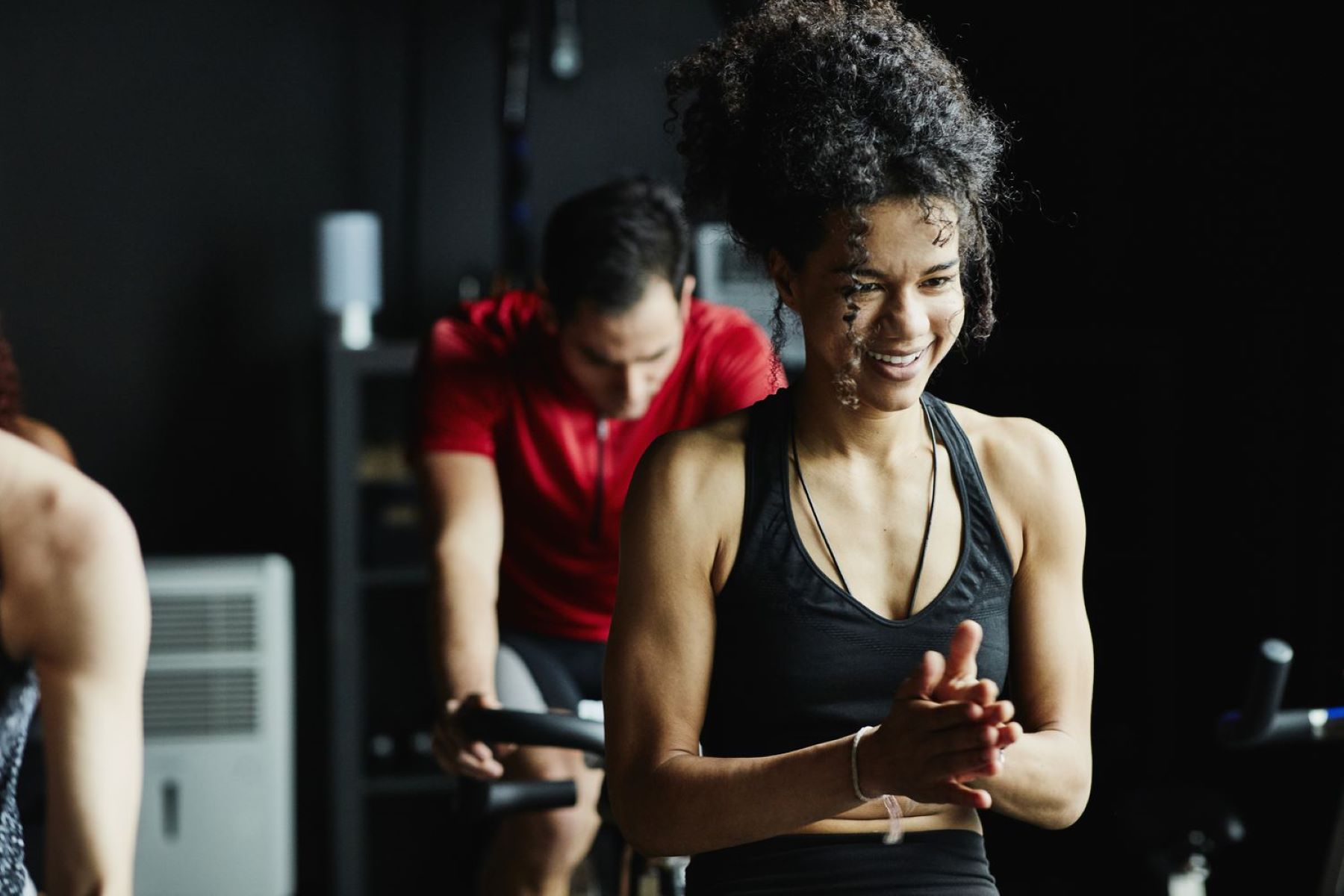

Featured
When To Change Out Workout Clothes
Modified: January 2, 2024
Discover the key signs of when to change out your featured workout clothes. Proper maintenance and replacement can enhance your exercise experience and prolong the lifespan of your garments.
Introduction
When it comes to our workout routines, we often focus on the exercises we perform, the intensity of our workouts, and the results we hope to achieve. However, one crucial aspect that we often overlook is the condition of our workout clothes. Just like any other piece of clothing, our workout attire goes through wear and tear over time, and knowing when to change them out is essential for both comfort and hygiene.
Keeping your workout clothes in good condition not only ensures optimal performance but also helps prevent skin irritation and potential allergic reactions. The signs of wear and tear can vary depending on factors such as the material, frequency of use, and type of activities performed. By understanding these signs, you can make informed decisions about when to replace your workout clothes.
In this article, we will explore the various signs that indicate it’s time for a change in workout attire. We will discuss indicators such as odor and excessive sweat, loss of elasticity and stretchiness, fading or discoloration, visible damage or rips, and even the impact of changing seasons or weather conditions. Furthermore, we will delve into the importance of taking care of your workout clothes to prolong their lifespan.
So, whether you’re a fitness enthusiast, an athlete, or someone who simply enjoys staying active, read on to discover the telltale signs that it’s time to bid farewell to your old workout clothes and make way for new, fresh gear that will elevate your exercise experience.
Signs of Wear and Tear
One of the first indicators that your workout clothes may need replacing is the presence of foul odor and excessive sweat. Over time, sweat and bacteria can build up in the fibers of your clothes, leading to an unpleasant smell that even regular washing may not be able to eliminate. This not only affects your confidence during workouts but can also contribute to the growth of bacteria on your skin, potentially leading to skin infections or irritation.
Another sign to watch out for is the loss of elasticity and stretchiness in your workout clothes. Whether it’s your sports bra, leggings, or athletic top, the material should have enough stretch to provide you with a comfortable range of motion. If you notice that your clothes are sagging, losing their shape, or constantly slipping during exercise, it’s a clear indication that they have worn out and are no longer providing the support you need.
Fading or discoloration is yet another sign that your workout clothes may be past their prime. Excessive exposure to sunlight, frequent washing, and the use of harsh detergents can all contribute to the fading or discoloration of fabrics. Not only does this affect the aesthetic appeal of your workout attire, but it may also indicate that the fibers are breaking down and becoming weaker, compromising the durability and longevity of your clothes.
Visible damage or rips in your workout clothes cannot be ignored. Whether it’s a small tear along the seam or a more significant rip in the fabric, damaged clothing can hinder your performance and potentially lead to embarrassing wardrobe malfunctions. Additionally, if left unaddressed, these tears can worsen and make your clothes increasingly uncomfortable to wear. Once you start noticing visible damage, it’s time to consider investing in new workout gear.
Skin irritation or allergic reactions can be a red flag that your workout clothes are no longer suitable for use. Certain fabrics, such as synthetic materials or those containing chemicals, can cause irritation, itchiness, or even rashes, especially if you have sensitive skin. If you notice any unusual skin reactions after wearing your workout clothes, it’s a strong indication that it’s time to switch to more skin-friendly and hypoallergenic options.
Odor and Excessive Sweat
One of the most noticeable signs that your workout clothes may need changing is the presence of persistent odor, even after washing. During exercise, we naturally sweat, and over time, the sweat can accumulate in the fabric of our workout clothes. Bacteria thrive in moist environments, and when they come into contact with sweat, they produce an unpleasant smell. Regular washing may help temporarily mask the odor, but it may not completely eliminate it, especially if the sweat and bacteria have deeply penetrated the fabric fibers.
Excessive sweat can also contribute to the degradation of the fabric itself. The salt and acids present in sweat can weaken the fibers of your workout clothes, causing them to become less durable over time. As a result, the fabric may start to fray or lose its elasticity, making the clothes less supportive and less comfortable to wear during your workouts.
If you find that no matter how many times you wash your workout clothes, they still emit a lingering odor, it’s a clear indication that it’s time for a change. Investing in new workout attire will not only ensure a fresh start but also help maintain good hygiene and prevent the growth of bacteria on your skin.
To minimize odor and excessive sweat, consider choosing workout clothes made from moisture-wicking materials. These fabrics are designed to pull sweat away from your skin and into the outer layer of the clothing, where it can evaporate more easily. This helps keep you drier and more comfortable during your workouts and reduces the likelihood of odor-causing bacteria building up in the fabric.
Additionally, proper care and maintenance of your workout clothes can also help combat odor and excessive sweat. After each workout, make sure to remove your clothes promptly and allow them to air dry before tossing them into the laundry basket. Avoid leaving sweaty clothes in a damp, enclosed space for an extended period, as this can create an ideal breeding ground for bacteria.
When laundering your workout clothes, use a mild detergent and avoid using fabric softeners or dryer sheets, as these can leave a residue on the fabric that can trap odors. Instead, opt for detergents specifically designed for sports or activewear, as they are formulated to help remove sweat and odor-causing bacteria effectively.
By being mindful of odor and excessive sweat, you can maintain fresh and hygienic workout clothes, allowing you to focus on your fitness goals without any distractions.
Loss of Elasticity and Stretchiness
One of the essential aspects of workout clothes is their ability to provide for a full range of motion and offer the necessary support during exercise. However, over time, the elasticity and stretchiness of your workout attire can diminish, affecting the overall comfort and fit.
If you notice that your leggings, sports bras, or other workout clothes are no longer hugging your body as they used to or if they constantly slip or slide during your workouts, it is a clear sign of the loss of elasticity. As the fabric ages and undergoes repeated stretching, it can begin to lose its ability to bounce back to its original shape. This can result in sagging, bagginess, or a lack of support in key areas, compromising your comfort and potentially hindering your performance.
Worn-out elastic bands are another common sign of diminishing stretchiness. The elastic bands in workout clothes, such as the waistband of your leggings or the bands of your sports bra, play a critical role in providing a snug and secure fit. As these bands age, they can become stretched out and less effective at holding your clothing in place.
Additionally, the loss of elasticity can impact the overall durability of your workout clothes. Without proper elasticity, the fabric may be more prone to tearing or ripping, especially during intense movements or activities that require a lot of stretching. This can result in not only a decrease in the performance of your clothing but also potential embarrassing wardrobe malfunctions.
To prolong the elasticity and stretchiness of your workout clothes, it’s important to choose high-quality pieces that are specifically designed for athletic activities. Opt for materials that are known for their stretch and recovery capabilities, such as spandex or nylon blends. These fabrics are often more resistant to loss of elasticity and can provide a continuous and comfortable fit over time.
Additionally, proper care and maintenance can help slow down the loss of elasticity. Avoid using harsh detergents, hot water, and high heat when washing and drying your workout clothes, as these can weaken the fabric and contribute to the deterioration of elasticity. Instead, opt for gentle washing cycles with cool water and air drying whenever possible.
If you notice significant loss of elasticity and stretchiness in your workout clothes, it’s time to invest in new gear. By replacing worn-out attire, you can ensure optimal comfort, support, and flexibility during your workouts, enabling you to perform at your best.
Fading or Discoloration
Over time, exposure to sunlight, frequent washing, and the use of harsh detergents can contribute to the fading or discoloration of your workout clothes. Whether it’s your favorite pair of leggings, a vibrant sports bra, or a colorful workout top, these signs of wear and tear can not only affect the aesthetic appeal of your attire but also indicate that the fabric fibers may be breaking down.
Fading occurs when the dyes or pigments used in the fabric start to lose their vibrancy and intensity. This can result in a washed-out appearance or a gradual dullness of the colors. Discoloration, on the other hand, refers to any changes in the original color of the fabric, such as yellowing or the appearance of stains that are resistant to washing.
Not only can fading and discoloration affect your confidence and personal style during workouts, but they may also indicate that the fabric fibers are becoming weaker and more prone to damage. The exposure to sunlight’s UV rays can cause the fabric to break down, resulting in a loss of overall durability and quality.
To prevent excessive fading or discoloration, consider taking certain precautions. When washing your workout clothes, turn them inside out to minimize direct exposure to the detergent or any potential abrasive surfaces in the washing machine. Additionally, try to avoid using bleach or harsh detergents that can strip away the colors of the fabric. Instead, opt for mild detergents that are specifically formulated for activewear or sports clothing.
To further protect your workout clothes from fading, consider drying them away from direct sunlight. UV rays can accelerate the fading process, so air-drying your garments indoors or in a shaded area can help maintain the vibrancy of the colors. If using a dryer, select a low heat setting or use the air-dry option if available.
If you notice significant fading or discoloration in your workout clothes, it may be time to replace them. While it’s tempting to hold onto your favorite pieces, the diminished appearance can affect your motivation and confidence during exercise. By investing in new workout attire, you can enjoy fresh, vibrant colors that elevate your mood and ensure that your clothing stays in better condition for longer.
Visible Damage or Rips
One of the most obvious signs that it’s time to replace your workout clothes is the presence of visible damage or rips. Whether it’s a small tear along the seam or a more significant rip in the fabric, damaged clothing can hinder your performance and potentially lead to embarrassing wardrobe malfunctions.
Oftentimes, visible damage occurs over time as a result of repeated use and high-impact activities. The strain and stress on the fabric can cause it to weaken, resulting in tears or holes. Additionally, rough surfaces, sharp objects, or snagging on equipment can also contribute to visible damage. It’s important to pay attention to these signs and address them promptly to prevent further damage.
When you notice visible damage on your workout clothes, it’s time to consider investing in new gear. Continuing to wear clothing with rips can not only be uncomfortable but may also compromise your range of motion or the effectiveness of the support provided by the garment.
Moreover, ignoring visible damage can lead to the situation worsening. A small tear can quickly become a larger rip if left unattended, making the clothing unwearable. Instead of risking further damage, replace the damaged item and ensure you have workout attire that supports your movements without any hindrances.
To prevent visible damage or rips in your workout clothes, take care when wearing them and be mindful of your surroundings. Avoid sharp objects or rough surfaces that could potentially snag or tear the fabric. Additionally, certain activities, such as intense weightlifting or contact sports, may put extra strain on the fabric, so consider choosing durable and reinforced workout gear designed for such activities.
Regular inspection of your workout clothes is also essential. Check the seams, the elasticity of the fabric, and any areas that may have experienced additional stress during workouts. By catching small tears or signs of weakening early on, you can proactively address them and prevent them from becoming larger issues.
Overall, visible damage or rips in your workout clothes are clear indicators that it’s time to replace them. By investing in new gear, you can have peace of mind knowing that your clothing is in good condition, allowing you to focus on your workouts without any distractions.
Skin Irritation or Allergic Reactions
Another important sign that it’s time to change your workout clothes is when you experience skin irritation or allergic reactions. Certain fabrics, especially synthetic materials or those treated with chemicals, can be irritating to the skin, causing itchiness, redness, or even rashes.
Skin irritation can occur due to several reasons. The fabric may not be breathable, trapping sweat and moisture against the skin, leading to irritation. Additionally, some fabrics may contain allergens or chemicals that can trigger sensitivities or allergic reactions in certain individuals.
If you notice persistent itching, redness, or any discomfort during or after wearing your workout clothes, it’s crucial to pay attention to these signs. Continuing to wear clothing that causes skin irritation can potentially worsen the condition and lead to further complications.
To address skin irritation or allergic reactions, consider switching to workout clothes made from natural or hypoallergenic fabrics. Fabrics like cotton or bamboo are known for their breathability and ability to wick away moisture, reducing the likelihood of skin irritation. Additionally, look for clothes that are labeled as “hypoallergenic” or “skin-friendly” to minimize the risk of allergic reactions.
In some cases, simply washing your workout clothes with a gentle hypoallergenic detergent may alleviate the issue. However, if the irritation persists even after taking these measures, it’s wise to consult a dermatologist or allergist for further advice.
By identifying and addressing skin irritation or allergic reactions caused by your workout clothes, you can ensure optimal comfort and well-being during your exercise routines. Investing in workout attire that is gentle on the skin will not only prevent discomfort but also help you feel confident and focused on achieving your fitness goals.
Changing Seasons or Weather
Another factor to consider when determining when to change out your workout clothes is the changing seasons or weather conditions. As the temperatures and weather patterns shift throughout the year, your workout attire needs to adapt to keep you comfortable and protected.
In hot and humid climates, it’s crucial to have workout clothes that can effectively wick away sweat and allow for proper ventilation. Moisture-wicking fabrics such as polyester or nylon blends are ideal for keeping you cool and dry during intense workouts. They help to pull sweat away from your body and allow it to evaporate, preventing discomfort and potential chafing.
Conversely, when the weather turns cold, you’ll need workout clothes that provide insulation and help to regulate your body temperature. Layers are key to staying warm during outdoor activities in cooler temperatures. Look for moisture-wicking base layers to keep you dry, insulating mid-layers to retain warmth, and windproof or waterproof outer layers to protect you from the elements.
It’s important to assess whether your current workout clothes are suitable for the changing seasons or weather conditions you’ll be facing. If you find that your clothes are not keeping you comfortable or adequately protected, it may be time to invest in gear specifically designed for the prevailing climate.
Additionally, adapting your workout clothes to the changing seasons can enhance your overall motivation and enjoyment of outdoor activities. Having appropriate attire that keeps you comfortable, regardless of the weather, allows you to continue pursuing your fitness goals without feeling restricted by the elements.
When transitioning from one season to another, take the time to evaluate your workout wardrobe and identify any gaps or needs. Consider investing in versatile pieces that can be easily layered or removed, depending on the temperature. Look for clothing with features like adjustable hoods, zippered pockets, or reflective accents for increased visibility during darker or low-light conditions.
By adjusting your workout clothes to match the changing seasons or weather conditions, you can optimize your performance, stay comfortable, and enjoy outdoor activities to the fullest.
Frequency of Use
Another factor to consider when deciding when to change out your workout clothes is the frequency of use. The more often you wear your workout attire, the quicker it will undergo wear and tear, potentially affecting its performance and longevity.
If you’re an active individual who participates in rigorous workouts on a daily basis, your workout clothes may experience more strain and stress compared to someone who exercises less frequently. High-intensity activities, such as running, weightlifting, or intense cardio sessions, can put additional strain on the fabric, leading to faster wear and tear.
Regular use of workout clothes also means more exposure to sweat, oils, and bacteria. Even with regular washing, these substances can gradually build up in the fabric, affecting its overall freshness and potentially causing odor or skin irritations.
It’s important to regularly assess the condition of your workout clothes based on how frequently you use them. Inspect for signs of wear such as fading, loss of elasticity, visible damage, or any discomfort you may experience while wearing them. Regularly checking your workout clothes will help you determine whether they are still providing the necessary performance and support you need.
If you exercise frequently, it may be beneficial to have a larger collection of workout clothes to rotate through. This will allow each individual item to have ample time to air out and regain its original shape and freshness. By giving your clothes a break between uses, you can help prolong their lifespan.
It’s also important to note that fabrics have a limited number of washes they can endure before they start to deteriorate. So, if you’re consistently using and washing your workout clothes, take note of how they respond to laundering. If you notice significant changes in their quality or performance, it may be a sign that they have reached their maximum usage and it’s time to replace them.
By considering the frequency of use when evaluating the condition of your workout clothes, you can make informed decisions about when to invest in new gear. This will help ensure that your attire continues to support your workouts effectively and allows you to focus on achieving your fitness goals without any distractions.
Impact of Different Activities
When it comes to workout clothes, different activities can have varying impacts on the condition and durability of your attire. The type of activities you engage in can determine the level of strain and stress placed on the fabric, influencing when it’s time to change out your workout clothes.
High-impact activities, such as running, jumping, or HIIT workouts, involve a lot of movement and can put significant stress on your workout attire. The repetitive motions, high-intensity movements, and friction can lead to faster wear and tear. If you regularly participate in these types of activities, it’s important to closely monitor your workout clothes for signs of damage, such as rips, fraying seams, or loss of elasticity.
Similarly, activities that involve a lot of stretching, such as yoga or Pilates, can also impact the longevity of your workout clothes. The continuous stretching and bending can cause the fabric to weaken over time, resulting in decreased flexibility and support. It’s important to ensure that your clothes maintain their shape and elasticity to provide the necessary comfort and range of motion during these activities.
Outdoor activities, such as cycling, hiking, or trail running, may also have specific requirements for workout clothes. These activities often expose your attire to elements like sun, wind, or rough surfaces. In such cases, it’s important to choose clothing that provides protection from the elements, as well as durability to withstand any potential abrasions or contact with sharp objects.
In contrast, lower-impact activities, such as walking or light strength training, may not put as much stress on your workout clothes. However, it’s still important to assess the condition of your attire regularly, as constant use can still lead to wear and tear over time.
By understanding the impact that different activities can have on your workout clothes, you can better gauge when it’s time to replace them. Pay attention to the specific movements, strains, and circumstances that your clothes are exposed to during your workouts. This awareness will help you identify any signs of damage or deterioration, allowing you to make necessary adjustments to your workout wardrobe as needed.
Additionally, choosing workout clothes that are designed specifically for the activities you engage in can further enhance their performance and durability. Look for features such as reinforced stitching, moisture-wicking capabilities, or specific design elements that cater to your chosen activities. Investing in gear that is tailored to your needs will help ensure optimal comfort, functionality, and longevity.
Taking Care of Workout Clothes
Taking proper care of your workout clothes is essential for maintaining their performance, longevity, and overall quality. By following these tips, you can ensure that your workout attire stays in optimal condition and continues to provide the support and comfort you need during your exercises.
First and foremost, always check the care instructions provided by the manufacturer for each garment. Different fabrics and materials may require specific care, such as temperature limits or special washing instructions. Following these guidelines will help prevent damage and maintain the integrity of the fabric.
After each workout session, it’s important to promptly remove your sweaty clothes and allow them to air dry. Leaving damp clothing in a confined space can promote the growth of bacteria, leading to unpleasant odors and potential skin irritations. If you can’t wash your workout clothes immediately, hang them up to dry, or use a mesh laundry bag to allow for air circulation.
When it comes to washing your workout clothes, it’s best to use a mild detergent and avoid the use of fabric softeners or dryer sheets. These products can leave a residue on the fabric, reducing its ability to wick away moisture and potentially leading to the buildup of bacteria or allergens. Instead, opt for detergents specifically formulated for activewear or sports clothing, as they are designed to effectively remove sweat and odor-causing bacteria.
When it comes to drying your workout clothes, it’s generally best to air dry whenever possible. High heat from dryers can break down the fibers of the fabric and damage the elasticity. If you do use a dryer, select a low heat setting or use the air-dry option if available. Additionally, avoid drying your clothes in direct sunlight, as this can contribute to fading or discoloration of the fabric.
Proper storage of your workout clothes is also important. Instead of cramming them into a small space, give them room to breathe and keep them folded or hung up neatly. This helps prevent wrinkles and maintains the shape of the garments. Avoid storing workout clothes in plastic bags or containers, as they can trap moisture and promote the growth of mildew or bacteria.
Lastly, it’s important to address any stains or spills on your workout clothes as soon as possible. Treat stains promptly with a stain remover, following the instructions provided by the product. Avoid letting stains set into the fabric, as they can be more challenging to remove later on.
By taking care of your workout clothes through proper washing, drying, storage, and stain treatment, you can prolong their lifespan and ensure that they continue to perform at their best. Regular maintenance and attention to detail will help keep your workout attire fresh, comfortable, and hygienic throughout your fitness journey.
Conclusion
Knowing when to change out your workout clothes is essential for maintaining comfort, performance, and hygiene during your exercise routines. By paying attention to various signs of wear and tear, such as odor and excessive sweat, loss of elasticity and stretchiness, fading or discoloration, visible damage or rips, skin irritation or allergic reactions, as well as considering factors like changing seasons, frequency of use, and the impact of different activities, you can make informed decisions about when it’s time to invest in new gear.
Regularly assessing the condition of your workout clothes and addressing any signs of wear can help ensure that your attire continues to provide the necessary support, flexibility, and comfort throughout your workouts. Additionally, taking care of your workout clothes through proper washing, drying, and storage techniques will help optimize their longevity and performance.
Remember, workout clothes are not just about style but also about function. Worn-out or ill-fitting attire can hinder your performance and impact your overall exercise experience. By investing in quality workout gear and regularly evaluating its condition, you can enjoy optimal comfort, confidence, and protection during your fitness activities.
So, whether it’s replacing those leggings that have lost their stretch, investing in new workout tops to combat fading or discoloration, or switching up your gear for different weather conditions, keep these signs in mind and make educated decisions about when to change out your workout clothes. Prioritize your comfort, performance, and well-being, and enjoy the benefits of exercising in fresh, functional attire.

